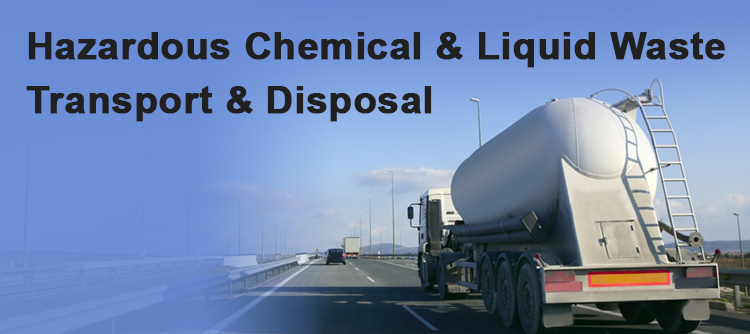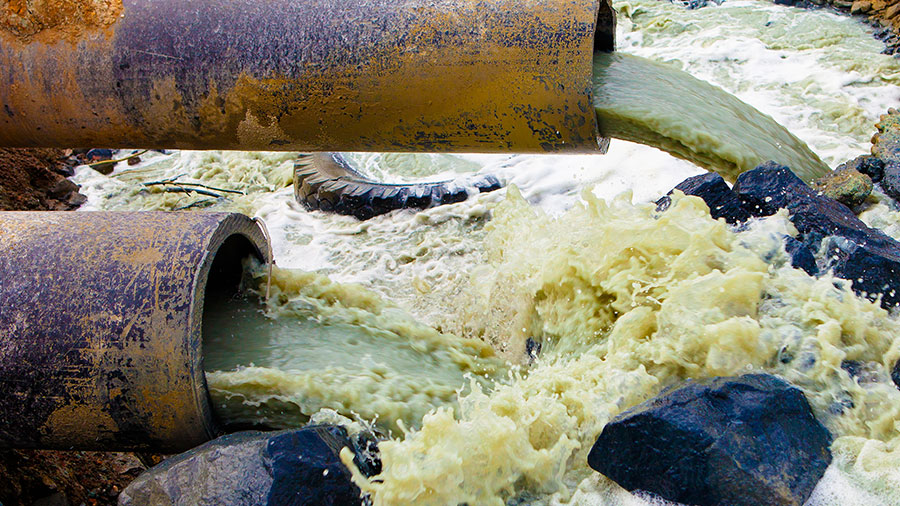Ingenious Industrial Wastewater Treatment Solutions: Safeguarding the Environment
Ingenious Industrial Wastewater Treatment Solutions: Safeguarding the Environment
Blog Article
How Liquid Waste Disposal Works: A Detailed Review of Techniques and Technologies Used

Introduction of Liquid Waste Kind
The complexity of fluid waste types demands a detailed understanding of their features and ramifications for disposal. Fluid waste can broadly be classified into several kinds, consisting of industrial, community, farming, and unsafe waste. Each classification displays unique residential or commercial properties, calling for particular management strategies to minimize ecological and wellness dangers.
Industrial liquid waste stems from producing processes and often contains an array of contaminants, such as heavy steels, solvents, and organic compounds. Community liquid waste, mostly comprising wastewater from families and industrial establishments, contains raw material, nutrients, and pathogens (industrial wastewater treatment). Agricultural liquid waste, consisting of drainage from ranches, may consist of fertilizers, pesticides, and pet waste, positioning dangers to water high quality and environments
Harmful liquid waste is characterized by its poisoning, sensitivity, or possible to cause damage. Comprehending these varied fluid waste kinds is crucial for developing reliable disposal methods and ensuring compliance with environmental policies.
Physical Therapy Techniques

Screening is the preliminary step, where larger bits and debris are removed from the liquid waste utilizing screens or grates. In sedimentation storage tanks, larger fragments settle at the bottom, developing a sludge layer, while the clarified liquid can be more treated.
Purification is one more important technique that includes passing the liquid through permeable materials, such as sand or membrane layers, to record smaller fragments. This action boosts the top quality of the fluid, making it suitable for succeeding treatment processes.

Chemical Treatment Techniques
Chemical therapy methods are necessary for effectively managing fluid waste, especially in addressing liquified and colloidal contaminants that physical approaches might not adequately get rid of. These techniques make use of various chemical representatives to neutralize, speed up, or change unsafe substances into much less harmful forms.
One common approach is coagulation and flocculation, where chemicals such as alum or ferric chloride are added to advertise the gathering of put on hold fragments. This procedure improves sedimentation, permitting for much easier removal of the resulting sludge. In addition, oxidation procedures, using representatives like chlorine or ozone, are utilized to break down complex natural compounds and virus, providing the waste much safer for discharge or additional treatment.
Neutralization is another vital strategy, which changes the pH of acidic or alkaline waste streams to neutral levels, avoiding potential harm to downstream systems and the atmosphere. Furthermore, advanced oxidation procedures (AOPs) make use of mixes of oxidants and ultraviolet light to degrade relentless pollutants, accomplishing a higher degree of treatment efficiency.
Organic Therapy Procedures
Biological treatment processes play an important duty in the management of fluid waste by using microbes to decay natural issue and reduce contaminant levels. These procedures can be generally categorized right into find out here anaerobic and cardiovascular treatments, each utilizing certain microbial areas to achieve efficient waste degradation.
Cardiovascular therapy involves making use of oxygen to facilitate the malfunction of organic products by germs. This procedure is generally carried out in activated sludge systems, where oygenation containers provide a conducive environment for microbial development, leading to the oxidation of natural pollutants. The resultant biomass can be separated from treated effluent via sedimentation.
In comparison, anaerobic treatment occurs in the absence of oxygen, depending on different microorganisms to break down raw material. This method is specifically beneficial for high-strength waste, as it generates biogas, a sustainable power source, while lowering sludge manufacturing. Technologies such as anaerobic digesters are regularly employed in local and commercial applications.
Both cardiovascular and anaerobic organic therapies not only reduce the ecological influence of liquid waste but also promote resource healing, making them essential parts of lasting waste management techniques. Their effectiveness, effectiveness, and versatility sustain their extensive implementation across various industries.
Emerging Technologies in Disposal
Cutting-edge methods to liquid garbage disposal are rapidly evolving, driven by advancements in modern technology and a boosting emphasis on sustainability. Among these arising technologies, membrane bioreactors (MBRs) have actually gotten traction for their ability to incorporate biological therapy with membrane layer purification, leading to top quality effluent that can be recycled in various applications. MBRs make it possible for smaller sized impacts and more reliable operations contrasted to standard systems.
An additional encouraging growth is using discover here anaerobic digestion combined with nutrient recovery technologies, which not just deals with fluid waste however likewise generates biogas and recoups valuable nutrients like nitrogen and phosphorus. This double advantage boosts source efficiency and decreases ecological influence.
In addition, progressed oxidation procedures (AOPs) are being adopted for the destruction of complex natural contaminants. These techniques make use of effective oxidants and drivers to break down pollutants at the molecular level, using a very reliable remedy for challenging waste streams.
Moreover, the combination of expert system and machine discovering in waste monitoring systems is optimizing functional effectiveness and anticipating maintenance, bring about minimized expenses and boosted ecological compliance. These modern technologies mirror a substantial change in the direction of more sustainable and efficient liquid waste disposal his comment is here practices.
Final Thought
In conclusion, reliable fluid garbage disposal demands a detailed understanding of numerous techniques and innovations. The combination of physical, chemical, and biological treatment approaches makes sure the reliable monitoring of diverse waste types. Additionally, the appearance of cutting-edge innovations improves treatment effectiveness and promotes sustainability in waste monitoring methods. By constantly progressing these methodologies, it becomes possible to resolve the expanding obstacles associated with fluid waste, eventually contributing to environmental management and source recovery.
Liquid waste disposal is an essential facet of environmental management, requiring a comprehensive understanding of numerous strategies and technologies tailored to different waste types. Fluid waste can extensively be classified right into a number of kinds, consisting of industrial, metropolitan, farming, and harmful waste. Agricultural fluid waste, including runoff from ranches, might consist of plant foods, pesticides, and pet waste, posing threats to water high quality and environments.
Different physical treatment approaches play a crucial function in taking care of liquid waste successfully - industrial wastewater treatment.In final thought, efficient liquid waste disposal requires a comprehensive understanding of numerous techniques and modern technologies
Report this page